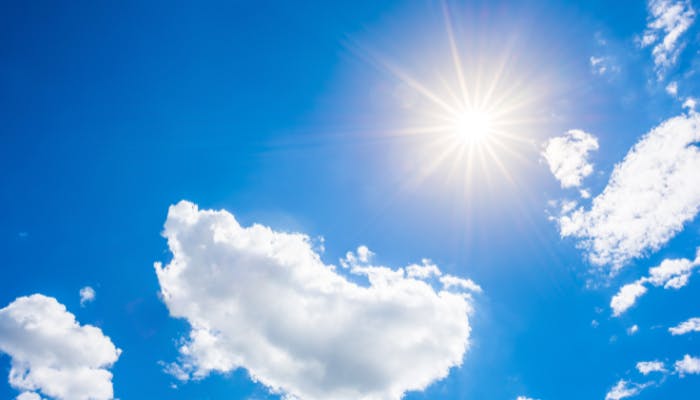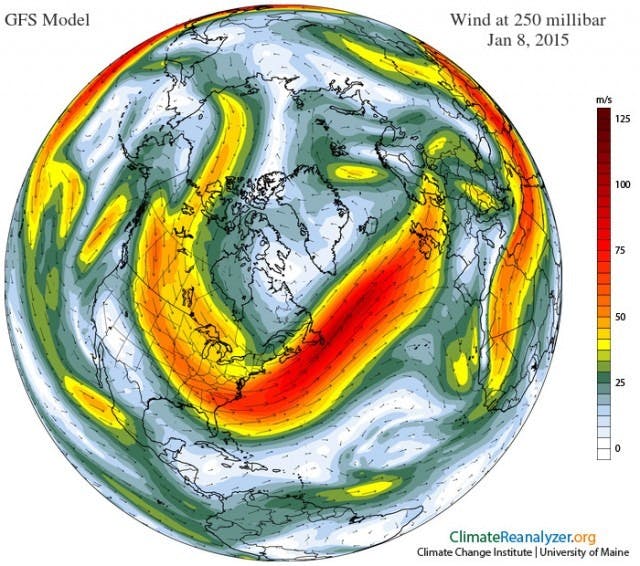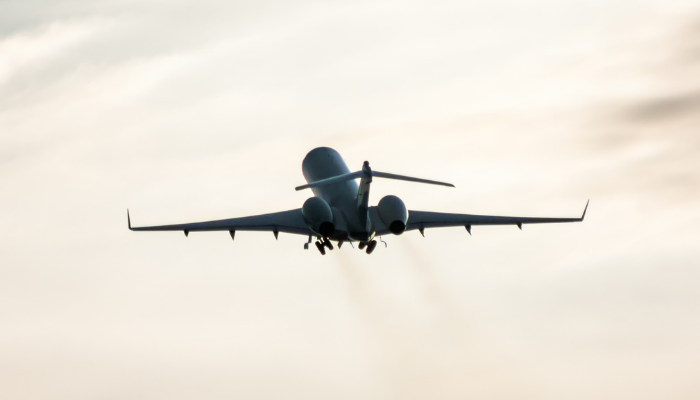How does the weather affect my private jet flight?
With freezing temperatures in the northern hemisphere over recent days, the weather is top of mind for many of our Jet Card and private jet charter clients.
Here we explain how variables in the weather can impact your flight operations.
Our expert team is available to discuss your travel plans and our Jet Card and premium charter solutions. Contact us or call +44 (0)20 7100 6960.

Consideration and constant monitoring of the day-to-day weather situation forms a key part of handling any flight. Our Client Services team works closely with the aircraft operators and crew when organising your flight, adjusting the route and calculating the timings using a number of weather planning tools and systems.
Different weather conditions impact your flight in different ways – from the everyday consideration of wind strength and direction, to the more unusual challenges of extreme heat, heavy fog or ice and snow. Here’s how.
Ice & snow
The main challenges for a private jet flight in very cold weather come on the ground. Aircraft are exceptionally well-designed to cope with freezing temperatures and snowfall once in the air. At 30,000 feet temperatures regularly reach as low as -80C, or even -100C without any problems.

So when it comes to factoring in ice or snow, the major focus is the condition of the runway and taxiway at the airport. And on de-icing the aircraft prior to the flight.
De-icing is a legal and safety requirement, for all private jet flights. With hangar space limited at most airports, standing aircraft will ice up in cold conditions - much in the same way as a car. Aircraft de-icing costs can add to the cost of a charter flight, but are inclusive for our Jet Card clients.
Private jets are less impacted than airline flights by heavy snowfall as they can use smaller airports, where snow clearing and de-icing can often take place quicker that at major hubs. There is a much smaller area of taxiway and fewer aircraft to keep clear (plus many private jets are kept out of the cold in hangars which reduces de-icing requirements).
And if all flights are grounded due to extreme snow, the agility of private charter means flights can return to normal immediately after restrictions are lifted. Whereas airline schedules often take days to recover.
Sun
Aircraft can operate perfectly safely in hot and sunny weather, in very high temperatures (up to 53C, depending on the aircraft type). But a high air temperature does change the performance of the aircraft.

Hot air is thinner than cooler air. And this affects the output of the aircraft’s engines as well as aerodynamic capabilities, increasing the required runway distance and reducing climb performance and the maximum payload. Pilots can opt to use a higher engine thrust setting when it’s particularly hot.
So while it’s rarely hot enough for flights to be grounded, it’s something that needs to be factored into the flight plan.
Of course, however hot (or cold) it may be outside, the cabin temperature of a private jet is always set to the passengers’ preference.
Fog
All aircraft, including private jets, are affected by fog and poor visibility, which can cause flight delays. Although many commercial aircraft are equipped with auto-land autopilots (that can land the aircraft in zero visibility), it is on the ground and during the take off phase that most of the air traffic delays occur.

When the visibility at an airport drops below 1,500m (described by pilots and airports as RVR – Runway Visual Range) the airport enforces Low Visibility Procedures (LVPs). During LVPs, Air Traffic will reduce the number of aircraft taxing and taking off to prevent accidents and incidents occurring.
Fog is often patchy and variable – with some airports affected while others remain clear. so just as with snow, a private jet flight allows for last minute changes of plan during foggy weather, finding gaps in the fog and re-routing the flight accordingly – not an option open to airlines.
For a morning flight, our team can also arrange for aircraft to position in for your flight departure the night before, which can help to avoid delays.
Wind
Wind direction and speed can make a flight time quite different, for exactly the same journey. A tail wind – which pushes the aircraft forward through the air – will increase the aircraft’s ground speed and shorten the journey.
A head wind – where the aircraft is flying against the wind direction – obviously does the opposite, slowing the aircraft’s ground speed and making the journey time longer.

These time differences are most dramatically seen on transatlantic flights, due to jet streams. Jet streams are strong westerly winds that blow in a narrow band in the Earth’s upper atmosphere – at the altitudes used by most aircraft. Where these packets of fast moving air form a tube, they are called jet streams.
Aircraft are built and tested to withstand strong winds, but strong winds can be a factor in a turbulent journey. While turbulence can be a worry, it isn’t a safety concern. Read more: What is turbulence?
For take-off and landing, aircraft always move into the wind to reduce the ground speed.
Cross winds can also make take off and landing more challenging. So airports will impose limits if the wind is moving across the runway. Many airports have runways facing in different directions to mitigate against cross winds, allowing the pilots to use the runway that faces into the wind.
Rain
Rain doesn’t affect a flight that much in itself. Obviously if combined with very heavy winds, it can cause extra considerations and challenges to flight planning – even a change of route or a delay if the conditions are extreme. But generally speaking, aircraft are very well-equipped to deal with a bit of the wet stuff!

Visibility is the key consideration of course. While at higher cruising speeds, the airflow clears water from the windshield quite effectively (instruments can ‘see’ ahead regardless of the weather) the pilot needs a clear visual view at slower speeds, when coming into land or taxiing on the ground.
So some private jets do have windscreen wipers. Others (particularly smaller aircraft) have a high pressure air system, which blows rain off the windshield. And some manufacturers, including Gulfstream, use hydrophobic windshield coatings, which repel water, in place of wipers.
Thunderstorms
Thunderstorm clouds or Cumulonimbus, are always known as CBs by pilots (this is how they are abbreviated in pilot weather reports and the nickname has stuck).
CBs can be a factor in both hot and wet weather and often follow periods of very high temperatures.
Private jets are well-equipped to deal with CBs. On departure they have faster climb rates and the ability to get above the weather, leaving airliners behind and below. Then during the flight, less commercial and time pressure than airline pilots means the crew can take longer routes to fly around CBs.
On landing, the agility and manouverability of a private aircraft allows a more flexible approach to the runway, avoiding bad weather on the approach path. They can also descend later and faster to keep out of the bad weather for most of your journey.
However no pilot of any aircraft will fly into a CB, so with safety always the number one priority, your flight may be delayed by CBs directly overhead your departure airfield. Refuelling of an aircraft is also forbidden with CBs in the vicinity, due to the risk of lightening strikes.
Whatever the weather, our expert team is available to discuss your travel plans and our Jet Card and premium charter solutions. Contact us or call +44 (0)20 7100 6960.
Related content



